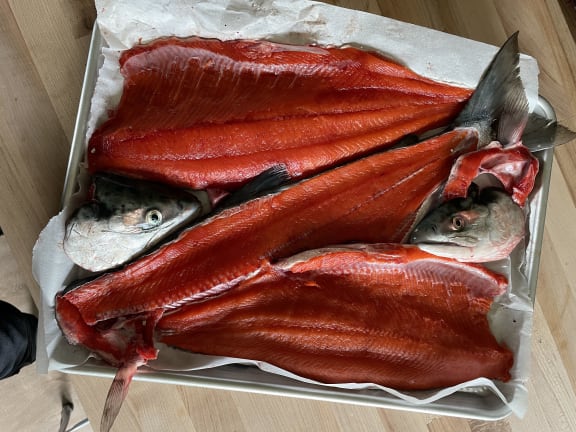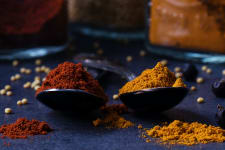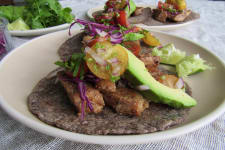In anticipation of summer, it’s a complete joy to share with you the latest essay from Kallenberg family friend and sockeye freedom fighter Melanie Brown. With Alaska’s first salmon season opener underway in Copper River — always the first to open — other fisheries in the region are finalizing their own preparations for summer salmon runs. Melanie, who fishes in Bristol Bay, offers a glimpse at the hustle and bustle of the boatyard and a sense of “homecoming” that runs in tandem with the movement of the fish.
The Pull
By Melanie Brown
“There is a plant that people call tundra cotton. Some years it is thick and blankets the tundra richly like snow. Those years people like to say, “Lots of cotton, lots of fish.” It may or may not be true, but I love this welcome that makes the anticipation of the season mount — I look for the cotton every time I fly in for the salmon season and take the drive down river.”
In some ways it seems that preparing for a salmon season is always happening because it is hard to forget about wild salmon and the impression they make upon the lives of those who come into contact with them. But the stark reality of preparation is undeniable and omnipresent once the journey to Bristol Bay begins. Returning to the land that reared the salmon and calls them home each year is an annual move that parallels the migration of the salmon and is dictated by their movement.
At the Anchorage airport, excitement and memory of past years mounts when the intercom announces the boarding of the flight to King Salmon, an old air force base that is now a proper town with an airport —and the plane is filled with fishermen. Most of the passengers are seasoned captains and crew. Others are greenhorns who are drawn to tasting what it is to be a fisherman in the world’s greatest wild sockeye run.
Upon landing it’s good to see the faces of many from past years and quickly greet people in passing as everybody grabs their bags and boxes from the luggage belt. The over-crowded airport is not designed for the boom of summer and reflects how many people are drawn toward the vitality of the great salmon rivers of Bristol Bay. From King Salmon, we follow the river downstream toward its mouth on the short highway that connects the airport to the town of Naknek. Viewing the vast tundra that may seem flat and featureless — to those who do not know better — is a homecoming that makes me feel like, “I’m back.”
Before all the drift boats launch (some like to call it “splash”), each boatyard is like a small town. Many crews live out of their boat cabins until they hit the water for the summer. Coffee time is one way to pause and catch up with people that you sometimes only see during the fishing season each year. Climbing a ladder up to a back deck is a good way to get off of the dust and mud of the gravel pad unless a captain needs to flee the grease of their engine. Fishermen who store their boats in a camp where their fish are processed have the support of a cannery mug-up that happens at the scheduled times of 10am, 3pm, and 9pm each day. Everybody drops their work when the whistle blows and runs to the break room for a cup.
 Caption: Melanie taking her skiff out for a sea trial.
Caption: Melanie taking her skiff out for a sea trial.
Life updates are catch-as-catch-can when people are hustling to get their boats ready, checking things off the big list of preparation, and tending to mechanical issues that would otherwise set us back for the season by losing fishing time. The Red Dog Inn is an old bar in Naknek village that is another way to find people and hear about their past year over a quick drink and stomp out some stress if there is live music playing. A sea of people, memories, and time washes over as the season approaches, but while we prepare there is little time to process who may have not come back this year because of age, injury, or passing away. We try to stop and remember, but also know that the salmon don’t stop for anything when they are called home, and we need to be ready for them.
As a set-netter who fishes out of an open skiff I have fewer mechanical worries, but our preparation involves walking the mud at low tide and making sure that our anchors are still holding so that our gear does not come loose with the push of the tide. A sea trial ensures that the motor is working and the welds on the skiff are still good. Stacking the gear into the skiff means that we are ready to launch the boat and set our nets when an opener is called.
The thing that makes the salmon season seem more real than any of the landmarks of preparation in my mind, though, is the taste of the first fish. It is wonderful to be gifted a fish that somebody else has caught and is kind enough to share. But catching a salmon in one’s gear after the first set, bringing it home, and cooking it — this is the truest proof of having fully prepared for the season. And nothing tastes better.
–
We have so much gratitude for Melanie and for everyone on the water who dedicate their lives to bringing in the abundant harvests that sustain us every year. Their commitment, hard work and shared experiences inspire us now and always.
Live Wild,
Monica
Pictured above, from Melanie: From last summer, prepping the first catch of the season and not wasting any of the parts.






